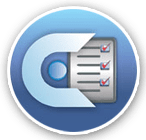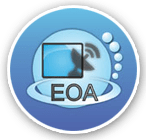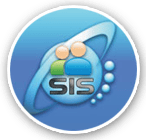Many industries or businesses were closed down temporarily. One industry we can’t close is educational institutes and schools. Any turbulence in the education system directly impacts the students' health and psychology. Understanding the criticality of the situation, many educational institutions have taken immediate steps to restart education via online channels.
Online education and Online examinations did exist prior to COVID, but they were limited to elite institutions. For the majority of the School/institution, Online education/examination was an alien concept, but with all the resources the School/institution had started the online classes for the students.
As per research, during lockdown, below is the process followed by many schools to kickstart online education.
- For better communication, started Whatsapp groups for all stakeholders: students, teachers, and Parents.
- Started online classes using cost-effective solutions like GoogleHangout, Zoom, and Jiomeet. After the initial start, many schools moved to better customized solutions.
- PTM - All the meetings, including the PTM, moved online using the above tools.
Exams are a critical part of the education system. In lockdown, taking the online exam was the biggest challenge. In this blog, we will discuss the challenges of Online examinations and the solutions we can use to overcome them.
A few challenges faced by schools or institutions are:
1. Question Paper Preparation: Question papers are the best way to evaluate the quality of institutions and students.Teachers always want to set high quality papers with a variety of question types. MCQ with a single correct option, MCQ with multiple correct options, essay type questions, etc.
2. Technical Challenge: Many schools and institutes don’t have the proper IT setup. The IT setup includes high speed broadband connection, high capability desktops and laptops, power back-up, and an IT team.
3. Know How: Many teaching staff are not technologically sound, and many are reluctant to use the IT system , though the IT team is there still. Teachers have to do many activities on the system and the software. From the teachers' perspective, to make any IT solution successful , the teachers have to embrace it. From the solution perspective, it should be easy enough that even non-technical people can easily handle it.
4. Students Enrollment in Bulk: Many schools/institutions have 1000+ students. Enrolling and taking the exams of all the students at a school is a tough task.
5. Identification of Student: Student Identification is key in any exam, in offline exams we check the student ID card or other government issued ID card to verify the student. In online systems, identification of students is the toughest. We have image/facial recognition, voice recognition, and many other AI-based recognition systems, but these solutions are not cost-effective and many times out of reach of low-revenue schools/institutes.
6. Online Exam Invigilation: With technology-savvy students and internet connectivity, it’s quite tough to conduct a fair examination. With a click of a button, students get all the answers. In a closed online examination environment, such as that used for many government-sponsored exams such as NET and TET, you can easily conduct a fair exam; however, in an open online exam where students take the exam from home, even with a robust monitoring and proctoring system, it is difficult to conduct a fair online exam.
7. Evaluation: For any exam, evaluation is the most critical part. It should be time-bound, 100% accurate, and provide us with the right set of data points.
There are a few key features of the online examination system that we should check while selecting online examination solutions.
1. Easy to customize: The Online examination software should allow you to set different types of questions; examiners should be able to set questions as per requirement; It can be MCQs, essay types, multiple-select objective questions, skills-based questions, etc.
2. Easy of Use: Teachers are generally too accustomed to the traditional way of teaching. A complicated system can demotivate them from using the online system. Make sure the solution is easy to use.
3. Enroll Students in Bulk: Most of the schools/institutions have 1000+ students. We should be able to add students in a few clicks.
4. Evaluation: The evaluation should be 100% accurate and quick. We should be able to get the result in a few settings or clicks. The evaluation process should be primarily automated with minimal human intervention.
5. Reporting & Analytics: Analytics is a key part of any examination and evaluation. There is a requirement for multiple reports by all the stakeholders: teachers, students, parents, and the principal/director of the institute. If the Online Examination solution can give various reports required by all the stakeholders, it will really make the job of the examination department quite easy.
6. Integration: The examination solution needs to be integrated with different solutions like school management systems, facial recognition systems, online proctoring etc. The solution should be flexible enough to integrate with all the required modules.







